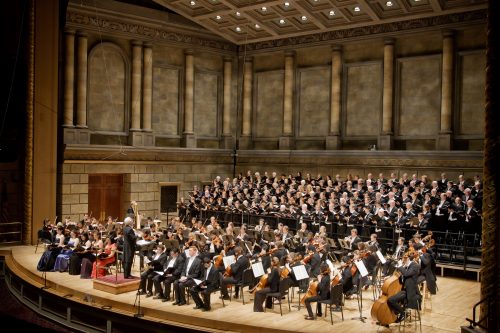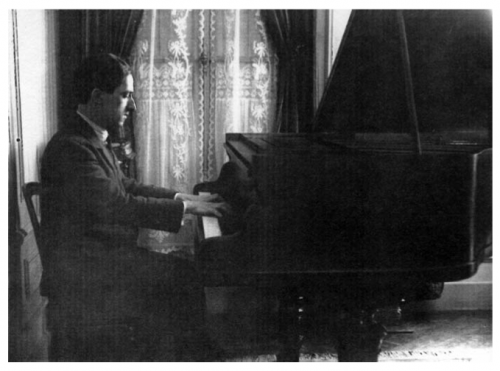By Erik Elmgren
The Eastman Chorale, Eastman-Rochester Chorus, and Eastman Philharmonia present a joint concert this Friday, May 5, 2017 at 8 p.m. in Kodak Hall at Eastman Theatre. The concert will feature two pieces for chorus and orchestra by Brahms, conducted by Professor William Weinert, and the Requiem by Maurice Duruflé, conducted by Eastman graduate assistant and DMA student Miles Canaday. In order to learn a bit more about this concert, I spoke to Miles about some of the inspiration for this concert and the challenges of preparing it.
Tell us a bit about yourself?
I’m currently a second-year DMA student studying Choral Conducting with Dr. William Weinert. I’m originally from Connecticut, and I went to Yale School of Music for my MM in choral conducting, and then worked in Denver for three years conducting the Laudamus Chamber Chorale, the Women’s Chamber Choir at Metropolitan State University of Denver, and a church choir.
The Eastman-Rochester Chorus (ERC) is an interesting ensemble given that it combines the forces of Eastman students and Rochester community members. How does this combination change the way you might coach and conduct and how does this dynamic affect the ensemble?
My work with Laudamus in Fort Collins, Colorado, helped prepare me to conduct the Eastman-Rochester Chorus, in that both groups are talented community ensembles with a wide variety of age and experience. There are quite a few students in ERC, but I don’t believe I treat the group any differently than if it were only community members. The true result is that the group feels more connected to the school with this mixture.
The pairing of the Duruflé and Brahms is quite unique. What inspired this decision? Were there any common threads between the works?
About a year ago, I selected the Duruflé as the large choral-orchestral piece I would perform with ERC for my second-year DMA recital, and Dr. Weinert then chose the two Brahms pieces that he will conduct to round out the program. If there’s a common theme, it’s that “all things must pass.” The focus of Gesang der Parzen is the fickleness of fortune and of the gods’ favor, the first line of Nänie is “Even the beautiful must perish,” and the Requiem commemorates the dead. The Brahms pieces have secular texts by Goethe and Schiller, respectively, while the Requiem is taken from the Catholic Mass for the Dead service. Not only that, Duruflé weaves the Gregorian chant themes from this Mass throughout his work. The choir and soloists sometimes sing these themes, but they are in the instrumental parts just as often. Anyone who grew up singing these chants will find the work strangely familiar!
What challenges have you faced in having to conduct the Duruflé and what has been most enjoyable about the experience?
The trickiest parts of the Requiem for the chorus are not the fast, loud sections that beg for God’s forgiveness for the departed, but in fact the lines that imitate or quote Gregorian chant. These are generally quiet, high, and incredibly exposed. We’ve worked hard on getting them to sound free, natural, and flowing forward. This has also been the most enjoyable part of the preparation process, along with working with the Philharmonia. It has all been an incredible privilege.
Eastman Chorale, Eastman-Rochester Chorus, and Eastman Philharmonia
Friday, May 5, 2017 – 8 p.m.
Kodak Hall at Eastman Theatre
This concert will be streamed lived on the Eastman School of Music website. Go to esm.rochester.edu/live for information and instructions.

